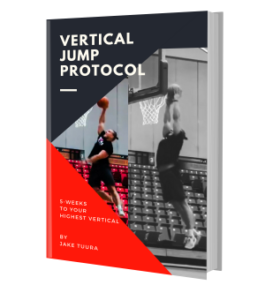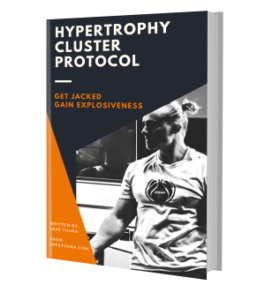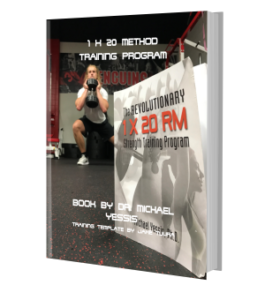“You don’t really care about it until it starts hurting on yourself. And especially once starts hurting to the point where you do your normal bag of tricks and it doesn’t work, right? And that’s when you realize that we know a lot of stuff, especially in 2025, right? But we don’t understand most of the things we know. And then, and then you realize not only do I not understand the things I think I know, I don’t really have the wisdom to apply them to either myself or my clients.”
“When it comes to the human body, there’s different tissues and they have different issues and different tissues need different solutions.”
“And so that’s how I got into like tendons… I started getting some wicked insertional Achilles tendonitis because when you’re running uphill at even like a 7 % incline is going to increase the strain on the Achilles like 55%.”
“That’s kind of how my journey into tendons started was blowing up my own Achilles. That’s the best way to do it.”
“The Achilles is not one thing. It’s a lot of things. You have different sub tendons. And those different subtendons go to different parts… the lateral gastroc, the medial gastroc, and the soleus… you start looking into fascicles and all that and connective tissue and tapered end fibers and all the you start realizing human body is far more complex than we ever can imagine.”
“At a simple nature, connective tissue has these behaviors. And one of the behaviors of connective tissue is that it’s non-uniform.”
“If force was uniform, meaning it went in one direction, one way all the time, we’d get injured all the time. And that’s the interesting thing. What we see is when people damage tendons, that there’s less variability.”
“They talk about in the research how the Achilles tendon will spiral and turn like 90 degrees that that creates a loaded spring.”
“When someone is running on the road, they’re running the same way in the same pattern, assuming they’re running on the flats, right? So the road runner is going to get incredibly efficient in certain lines of that connective tissue in those tendons.
“Just because you’re hitting the ground or you’re doing an ISO doesn’t mean you’re uniformly loading, stressing or straining every line of connective tissue or tendon. So why we tend to see road runners blow up in certain ways. And I think that we get issues is because they have a lack of variability of loading different areas of the tendon. And it’s backwards of what we think, right? We think that the areas that get the load are gonna blow up and the areas that don’t get load are gonna not. And the weird thing about it is, is we know tendons need strain to gain. So like in the Achilles, right? That spiral is going to mean that the anterior fibers which sit on the front of the calcaneus are not getting that much load compared to the back stuff. So it’s actually the fibers that aren’t getting enough load and are getting deprived of stress that are going to not be able to adapt.”
“Okay, I’ve got a tendon that’s not doing well, spam it with ISOs, drown it with ISOs, right? 100%. But then I think that’s where people just kind of do that. And then they do their three to four sets of 30 to 45 seconds. But we have to remember, that just because you get strong or train or strain a tendon in one position, that means you hit certain fibers, fascicles and tendons, right? Because there’s the tendons that connect all the fascicles and subtendons within the tendon, right? And we know some of them go the whole length, some of them don’t. So what I’m saying is we need to make sure that we hit the different aspects of the tendon.”
“I think that 99 % of people that do an isometric do it the same way every single time. It’s not wrong. But what I started doing was I started saying, okay, well, I almost want to think of it like floors of a hotel, right? If I have a 10 story hotel and I go to the third floor and I clean up all the rooms, technically the hotel is getting cleaner, but all those other floors need attention, right? So just because I cleaned the third floor doesn’t mean I cleaned the fourth or the fifth or the sixth. I have to go to that specific floor and do specific work to make that better. Now I could argue and say my hotel is less messy, but at the end of the day, those other areas have been neglected.”
“The nervous system is the great governor, right, of protecting us. It cares about survivability. Surviving and thriving. And to do that, it’s gonna stress shield those injured areas or those areas that aren’t able to transmit force appropriately.”
“Just because you’re slamming ISOs here and getting stronger, faster, better, that’s fricking amazing. Pain might be coming down. You might be coming awesome. Then all of sudden now we change and we add a 30 degree maybe a tibial external rotation or 30 degree internal rotation. Now we’ve changed which fibers are at length and which fibers aren’t at length and which, so we’ve completely changed which fibers are experiencing more length and more strain. Then all of sudden it’s like, oh, you might be able to do 150 pounds straight on. You go at tibial external rotation, done so. And then you realize, wait a second, I’ve been putting all my army, all my knights, all my warriors at the front gate, in the rear gate, the left gate, the right gate was completely exposed and vulnerable, right? And that’s where I think we get caught up in just training these linear lines, these positions, and it’s not wrong. But I’m talking like, this is the diversity that we need in our training to understand that like floors of a hotel, don’t just clean the third floor and call it good.”
“Maybe we do isos with our toe forward. Now we do them toe out, toe in. And the bodybuilders knew that instinctively back in the day that, well, we should go toe out and toe in to hit different parts of the muscle. So bodybuilders like Schwarzenegger, Tom Platts, all of them understood that from building the muscle. I think we need to steal that concept in terms of building the tendon and building the connective tissue that we need to change the angle.”
“We don’t understand connective tissue training because we get caught up training the same positions over and over again and just like if you were guarding a castle, it doesn’t matter how many dudes or people you have at the front gate, if the back one’s exposed, you’re going to get attacked and overwhelmed there.”
“I like to think of two things when it comes to connective tissue: low intensity durability and high intensity repeatability. Now that’s a concept from the world of endurance training when it comes to cardio. And I actually think it applies decently well to preparing connective tissue.”
“When I think about connective tissue training, the bigger the base, the higher the peak. So to me, one of the things that is super important throughout the week is high volume, low intensity durability, which means tons of inputs.”
“The more work I do there (longer ISOs), the more I’ll be able to do my high intensity ISOs.”
“You never stop doing base work. You never stop building your base bigger. And the truth is the more high intensity work you do, the faster degradation we’re going to get of the base, right? In the more sport you do, what’s going to beat you up more than anything?”
“For me, low intensity durability is something that people will do for two to four weeks. It should never leave the program. It should always be there In fact, I think you need to spend almost all your volume building that base ever wider and ever bigger.”
“The problem is, people view the low intensity work as just get out of pain and then, okay, move on to heavy slow resistance and isotonics, which is not wrong, not wrong at all. I just think it should never leave the program because it’s the thing that supports everything. And you’re gonna constantly be degrading and eroding the base.”
“I can get gains in muscle mass or hypertrophy by training at a low intensity relative to max and taking it what to failure so kind of the high volume method that would be more guys like Lee Haney, Arnold and stuff like that or we have the high intensity method like Mike Mentzer, Dorian Yates where they were like the one set to failure now notice how both people got to the result of hypertrophy, they just went there one went did a lot of work and then got there at some maximal, one went near maximal and got there. So I think the same thing happens with tendons, right?… I think it’s like hypertrophy that you can have a sprinter get injured and a marathon runner, even though you got the sprinter doing it for 10 seconds, the ultra marathon are going for 100 miles. I think it’s just like hypertrophy. You can get to Rome, you’re just taking two different ways.”
“You add more strain, which for people listening, that’s more length. You’re going to get more stress and it’s a nice one to one. Well, we know that abnormal connective tissue is going to have an abnormal stress strain curve… That means instead of this nice escalator, of tension, so tendon strain, meaning as I head further into length or I had further to end range, I should have this nice increase in stress or strain on the tendon. When we have abnormal connective tissue, we are going to experience abnormal stress for the same amount of length because of fibrosis, because of damage, because of I only load this line of the tissue and I don’t have variability in my training.”
“Sport is about demonstration, not about adaptation. Training is about adaptation.”
“Abnormal force transmission means we have less variability, we have more uniformity, which sounds like a good thing, but it’s actually bad because we’re not spreading the force out and dissipating it. The strong stuff gets stronger, the weak stuff gets weaker, and then it’s like the chicken or the egg. Does the strong stuff break because it’s doing all the work or is it the weak stuff that slowly degrades, atrophies, and that’s the stuff that goes? And the answer is, I think it’s a little bit of both and I’m sure it depends on the person.”
“You always need to be training for connective tissue architecture and making sure that we normalize those abnormal stress strain curves and they’re all over the body.”
“All the research is basically like Hey, do eccentrics work? And I even think their eccentric protocols don’t make any sense. Like I’m a gym rat and I’ve never done four by 25 eccentrics twice a day for like a month straight. I’m like, what are you guys doing? Like there’s a difference between emphasizing an eccentric and performing one. So all the research on eccentrics, well, I like it and it shows that it can have benefits. I think it’s just garbage. It’s like no one is doing 4×25 eccentrics with a backpack.”
“Okay, you can do four by 30 seconds. How about 30 by 30 seconds with no loss into an eccentric? Meaning, obviously, if holding an ISO and we start dipping into an eccentric, we’re changing behaviors. So I’m talking how much volume sets and reps can you do before there’s a change in behavior to eccentric? I don’t know the answer. It’s kind of like a cool science experiment.”
“At the end of the day, we’re progressively overloading, which is proof or a receipt that our body is adapting. And how do we know it’s adapting? Well, we have load, length, and time when it comes to the tendon.”
“We know connective tissue takes long times a long time to develop and that’s so frustrating. But the great news is it takes a long time to degrade. That’s why people don’t have any issues until they’re 30 40 50.”
“How silly is it to argue like whether we should be doing ISO, eccentric or concentric? It’s like kind of like in the matrix, people are like, do you take the red pill or the blue pill? People are like, take the red pill. I’m like, swallow them both and see what happens.”
“I picture like connective tissue as like home bodies or recluses. The muscles are like hey, bro Let’s go out. Let’s go do something and the connective tissues like bro. I just want to stay here.”
“This is why plyometrics I think don’t increase tendon stiffness or structural or morphological changes is because it happens so quick that force is just gonna go where it goes. That’s the dynamic system, right? The human body is a nonlinear dynamic system that’s non-uniform and its force transmission and dissipation. So, if we’re moving quick, it’s gonna be more a top-down behavior of the central nervous system, removing inhibitions to be able to just let the fascicles pull and gear, which is where I think people get in trouble because people are having all these tendon issues. And they’re doing nervous system style training or muscular dominant training in attempt to fix a connective tissue issue. So you have the top down, which is the nervous system component of reactive strength. And you have the bottom up, which is the tissue based behavior of connective tissue and tendon.”
Instagram: https://www.instagram.com/taylorstarch/



